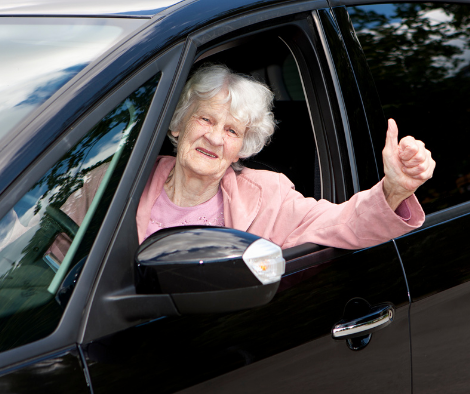How to Ease the Transition for Senior Drivers
November 16, 2021
 One of the most exciting times in a person’s life is that first day behind the wheel, newly minted driver’s license in hand. Remember? The freedom, your world transformed. Your first real experience as an adult.
One of the most exciting times in a person’s life is that first day behind the wheel, newly minted driver’s license in hand. Remember? The freedom, your world transformed. Your first real experience as an adult.
After fifty years, that feeling remains. Maybe not top of mind like back when you were sixteen. But subconsciously it’s there, even in your seventies and eighties. You still enjoy the freedom, control, and self-reliance that comes with being able to drive anywhere you want. Any time you want.
It’s like this for most of us here in the Mohawk Valley. That’s why it’s so hard to admit that, as you age, your driving skills may diminish.
So what if you have a family member whose performance behind the wheel is not up to par? How can you influence their thinking and get them to change their driving habits. Maybe even give up the car entirely.
You Can Persuade an Older Driver to Change
Before we begin, it’s important to note that age is not the only factor in driving ability. It’s the physical and mental changes that come with age that cause problems. In other words, just because a person is in his seventies doesn’t mean his driving is impaired.
And, as we describe above, realize how important their car is to seniors. How much it’s meant to them all their lives. In the same way that it has to you. This makes it an issue you need to handle with care.
But if you notice a deterioration in driving skills, here’s what you can do.
We checked with the National Highway Traffic Safety Administration (NHTSA) for advice. They offer smart, understanding suggestions on how to prepare and conduct this important discussion with your loved one. Here’s a summary of their three-step plan.
Step One
First, collect information. Simply put, start paying attention to the senior’s driving. Have other family members and friends do the same. (Caution: keep in mind that observers may be wrong.) Keep a record of your observations.
Make sure the driver stops at all stop signs and looks both ways to check for cross traffic. Stops at red lights. Yields the right of way. And stays in the proper lane. Also, are they driving too slow, impeding the flow of traffic? Too fast for conditions. Or getting lost on familiar routes.
Step Two
The next thing is to make a plan based on the observations you’ve collected. This makes for a better, more unbiased factual discussion. Be extra sensitive to your loved one’s self-respect. Pick a family member trusted by the driver to lead the discussion. Speak in terms of yourself, not the driver. Say, “I am concerned with your driving.” Not, “You are an unsafe driver.”
Remember, the plan may demand less driving by the older driver. That means the family will have to pick up the slack. Which leads us to:
Step Three
Okay, the plan includes less driving…or no driving…by our senior driver. Now what? Follow through on the plan. Make sure the driver is fully engaged with the new approach to his or her transportation. Again, be tuned in to their sense of pride. And of loss.
And remember, there are community organizations that will help. Thing is, the goal is to keep your loved one mobile. Involved in their community. Whether it’s to an evening card game or a ride to the golf course, people still want to socialize. They still enjoy the theater, religious services, and community events.
There is much more info available at the NHTSA website. Click the link above. We highly recommend reading the entire page. It’s really good and will set you up right for “the discussion.”
In our experience, a little bit of discomfort dealing with this common problem is worth the peace of mind knowing your loved one is happy…and safe. And so are others on the road.
Until next time,
Your SZW Team
SZW Insurance is your Utica area Trusted Choice™ independent insurance agent. Call us for a quote on insurance for your home, car, business, or life at 315.792.0000. Or request a quote here.



